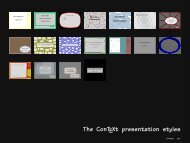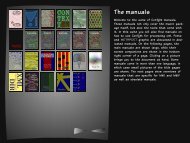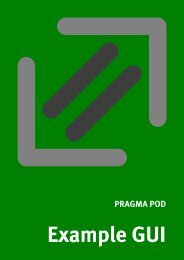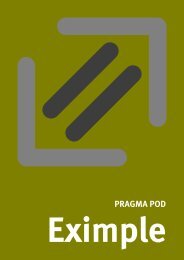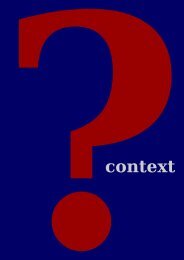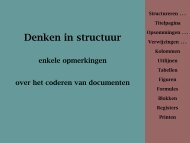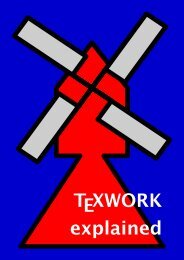ConTEXt - Pragma ADE
ConTEXt - Pragma ADE
ConTEXt - Pragma ADE
Create successful ePaper yourself
Turn your PDF publications into a flip-book with our unique Google optimized e-Paper software.
Introduction<br />
This is the first issue of ConT E Xt up--to--date. I will use this series of documents to introduce new<br />
features, provide suggestions, mention tricks, and write down whatever else comes up.<br />
In this first, rather large issue, I will introduce the extended cross reference mechanism, fill--in fields<br />
and JavaScript support. Although the latter two are still sort of β, the more final release will offer<br />
at least the functionality presented here. I will also show some applications of fields combined with<br />
JavaScript.<br />
New is the support of comment (text annotations in pdf terminology). Although already present<br />
some time, I will also discuss page transitions. Due to the fact that pdfT E X now supports pdf<br />
inclusion, I will introduce some new features of the figure inclusion mechanism, especially automatic<br />
type recognition.<br />
Chained references<br />
About half a year ago (end 1997/begin 1998) I reimplemented part of the reference macros. The<br />
reference mechanism not only deals with the more traditional cross references, but also takes care of<br />
hyperefences, navigational means, launching applications, running JavaScript, etc. By integrating<br />
these features in one mechanism, we limit the number of commands needed for hyperreferences,<br />
menus and buttons. Like before, we have the normal cross references (here I only demonstrate<br />
\goto):<br />
\goto[reference]<br />
\goto[outer reference::]<br />
\goto[outer reference::inner reference]<br />
The inner reference is either a user defined one, or a system provided reference, like previouspage<br />
to go to the next page, forward to cycle, nextcontents for the next level table of contents in a<br />
linked list of such tables, etc. By the way, some new keywords are backward and forward, two<br />
cycling alternatives for previous and next, that jump from last page to the first one and vice versa.<br />
The outer reference, being a file or url, is defined at the document level and is accessed by the ::.<br />
When possible one should use logical names and define such files and url’s at the outer document<br />
level using the appropriate definition commands.<br />
A special class of references are the viewer control ones, like CloseDocument or PreviousJump.<br />
They can be recognized by their capitals.<br />
So far, nothing is new but after half a year of experimenting, I decided to make some of these<br />
extensions permanent:<br />
\goto[action{arguments}]<br />
\goto[operation(arguments)]<br />
\goto[operation(action{arguments})]<br />
1 up--to--date 1998/1 stripped screen version





